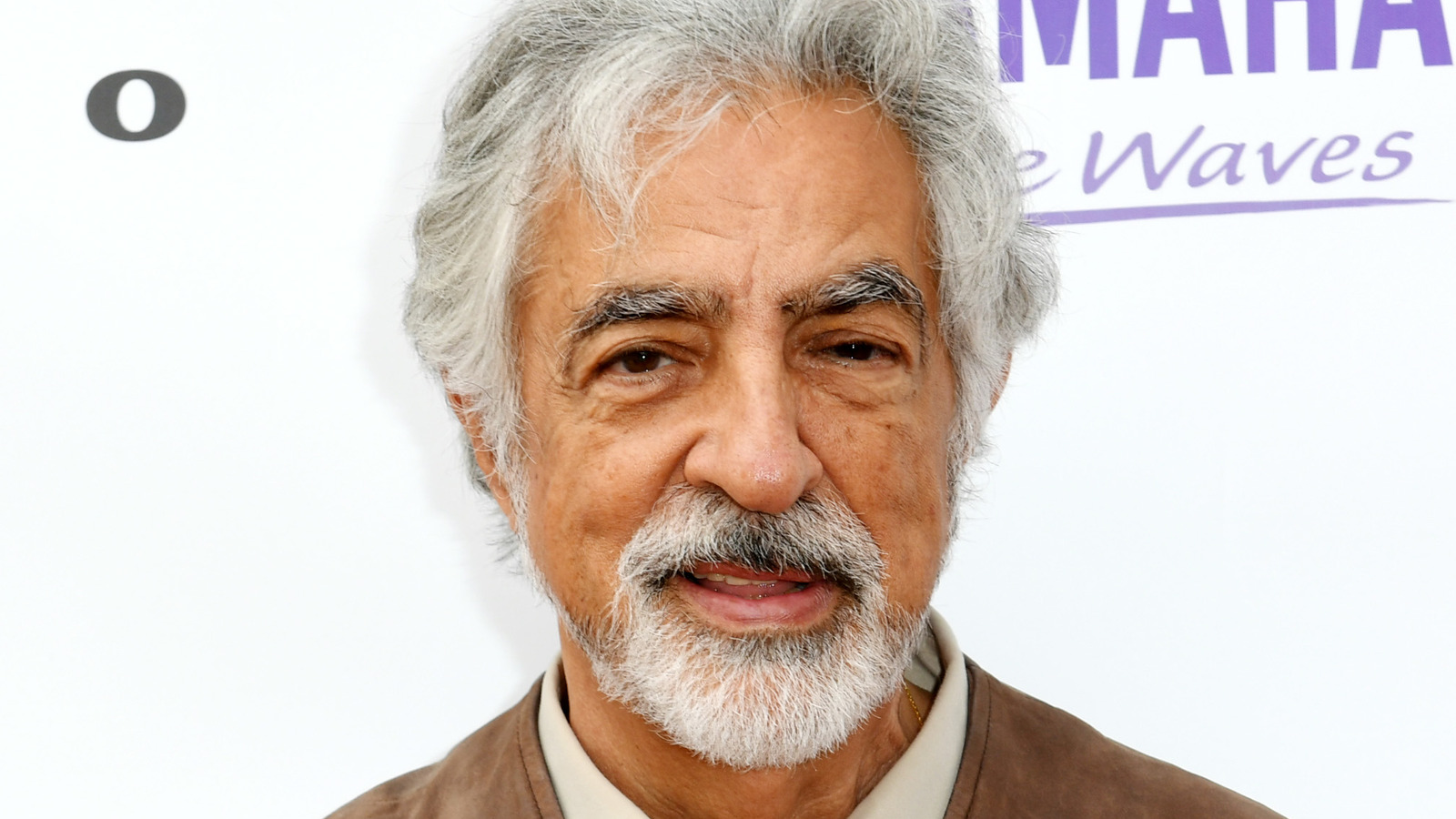Has Joe Mantegna Been Diagnosed With Cancer?
Does Joe Mantegna Have Cancer?
Joe Mantegna is an American actor, producer, and director. He is best known for his roles as David Rossi on the CBS crime drama Criminal Minds, Joey Zasa in The Godfather Part III, and Fat Tony in The Simpsons. In 2007, Mantegna was diagnosed with mantle cell lymphoma, a rare type of non-Hodgkin lymphoma.
Mantegna underwent treatment for his cancer, and in 2010, he announced that he was in remission. However, in 2016, Mantegna revealed that his cancer had returned. He underwent further treatment, and in 2017, he announced that he was once again in remission.
- Aditi Mistry Hot Video Live The Full Story You Need To Know
- Unveiling The Truth Behind Aditi Mystery Sex Video A Comprehensive Look
Mantegna's battle with cancer has been public, and he has used his platform to raise awareness of the disease. He has also been a vocal advocate for cancer research.
Mantegna's story is an inspiration to many people who are battling cancer. It shows that even after a cancer diagnosis, it is possible to live a full and active life.
Joe Mantegna's Cancer
Joe Mantegna is an American actor, producer, and director who has been diagnosed with cancer twice. In 2007, he was diagnosed with mantle cell lymphoma, a rare type of non-Hodgkin lymphoma. In 2016, his cancer returned. He underwent treatment for both instances of cancer and is currently in remission.
- Type of cancer: Mantle cell lymphoma
- Date of diagnosis: 2007
- Treatment: Chemotherapy, radiation therapy, and stem cell transplant
- Prognosis: Good
- Current status: In remission
Mantegna's battle with cancer has been public, and he has used his platform to raise awareness of the disease. He has also been a vocal advocate for cancer research.
Personal details and bio data of Joe Mantegna:
| Name: | Joe Mantegna |
| Date of birth: | November 13, 1947 |
| Place of birth: | Chicago, Illinois, U.S. |
| Occupation: | Actor, producer, director |
| Known for: | Criminal Minds, The Godfather Part III, The Simpsons |
Type of cancer
Mantle cell lymphoma (MCL) is a rare type of non-Hodgkin lymphoma that affects the B cells of the immune system. It is more common in men than women, and the average age of diagnosis is 60 years old. MCL is an aggressive cancer, but it is curable if it is diagnosed and treated early.
Joe Mantegna was diagnosed with MCL in 2007. He underwent treatment for his cancer, and in 2010, he announced that he was in remission. However, in 2016, Mantegna revealed that his cancer had returned. He underwent further treatment, and in 2017, he announced that he was once again in remission.
Mantegna's battle with MCL is a reminder that even after a cancer diagnosis, it is possible to live a full and active life. It is also a reminder of the importance of early diagnosis and treatment.
If you are concerned that you may have MCL, it is important to see your doctor right away. Early diagnosis and treatment can improve your chances of a successful outcome.
Date of diagnosis
The date of diagnosis is a significant factor in determining the prognosis and treatment options for someone with cancer. In the case of Joe Mantegna, who was diagnosed with mantle cell lymphoma in 2007, the date of diagnosis has played a crucial role in his journey with cancer.
- Early diagnosis: Mantegna's cancer was diagnosed at a relatively early stage, which gave him a better chance of successful treatment. Mantle cell lymphoma is an aggressive cancer, but it is curable if it is diagnosed and treated early.
- Treatment options: The date of diagnosis also influenced the treatment options available to Mantegna. At the time of his diagnosis, there were fewer treatment options available for mantle cell lymphoma than there are today. However, Mantegna was able to benefit from newer treatments that were developed after his diagnosis.
- Prognosis: The date of diagnosis can also affect the prognosis for someone with cancer. The earlier the cancer is diagnosed, the better the prognosis. Mantegna's early diagnosis gave him a better chance of a successful outcome.
Overall, the date of diagnosis is a significant factor in the journey of someone with cancer. Mantegna's early diagnosis gave him a better chance of successful treatment and a better prognosis.
Treatment
Joe Mantegna's cancer diagnosis led to a treatment plan involving chemotherapy, radiation therapy, and a stem cell transplant. These treatments played a crucial role in his journey with cancer, each serving a specific purpose in combating the disease.
- Chemotherapy
Chemotherapy is a type of drug treatment that uses powerful chemicals to kill cancer cells. It is often used in combination with other treatments, such as radiation therapy or surgery. Mantegna received chemotherapy as part of his treatment plan to target and destroy the cancer cells in his body.
- Radiation therapy
Radiation therapy uses high-energy beams of radiation to damage and kill cancer cells. It is often used to shrink tumors or to prevent cancer from spreading. Mantegna received radiation therapy as part of his treatment plan to target and destroy the cancer cells in his body.
- Stem cell transplant
A stem cell transplant is a procedure that involves taking healthy stem cells from a donor and transplanting them into the patient's body. The transplanted stem cells help to rebuild the patient's immune system and to produce new blood cells. Mantegna received a stem cell transplant as part of his treatment plan to help his body recover from the effects of chemotherapy and radiation therapy.
The combination of chemotherapy, radiation therapy, and a stem cell transplant played a crucial role in Joe Mantegna's successful battle with cancer. These treatments worked together to target and destroy the cancer cells in his body, and to help his body recover from the effects of the treatments.
Prognosis
A good prognosis is an important component of understanding "does Joe Mantegna have cancer." Prognosis refers to the likely outcome of a disease or condition. In the case of cancer, prognosis is based on a variety of factors, including the type of cancer, the stage of the cancer, and the patient's overall health. Mantegna's prognosis is good because he has mantle cell lymphoma, which is a relatively curable type of cancer, and because his cancer was diagnosed at an early stage.
A good prognosis means that Mantegna is more likely to respond well to treatment and to live a long and healthy life. However, it is important to remember that prognosis is not a guarantee. There is always a chance that cancer may recur or that other health problems may develop. Nonetheless, a good prognosis is a positive sign and it can give patients and their families hope for the future.
For patients with cancer, understanding their prognosis can help them to make informed decisions about their treatment and care. It can also help them to cope with the emotional challenges of living with cancer. Mantegna's good prognosis is a reminder that even after a cancer diagnosis, it is possible to live a full and active life.
Current status
The phrase "current status: in remission" signifies that an individual who was previously diagnosed with cancer no longer shows any evidence of the disease after undergoing treatment. In the context of "does Joe Mantegna have cancer," understanding the significance of remission is crucial.
- Meaning of remission
Remission refers to the state in which cancer is no longer detectable in the body through tests or imaging. It does not necessarily mean that the cancer has been cured, but it indicates that the treatment has been effective in controlling the disease.
- Types of remission
There are different types of remission, including complete remission, partial remission, and stable disease. Complete remission means that there is no evidence of cancer in the body, while partial remission indicates a reduction in the size or extent of the tumor. Stable disease means that the cancer is not growing or spreading.
- Importance of remission
Achieving remission is an important goal for cancer patients as it signifies that the treatment is working and that the cancer is under control. It can also provide patients with a sense of hope and optimism for the future.
- Long-term implications
While remission is a positive sign, it is important to note that cancer can sometimes recur. Regular follow-up appointments and screenings are essential to monitor for any signs of recurrence. Additionally, patients in remission may experience long-term side effects from their cancer treatment, which should be managed appropriately.
Understanding the concept of remission is crucial for individuals with cancer, including Joe Mantegna, as it provides a comprehensive view of their current status and helps them navigate the complexities of their cancer journey.
FAQs about Joe Mantegna's Cancer
This section addresses frequently asked questions regarding Joe Mantegna's cancer diagnosis and journey.
Question 1: What type of cancer does Joe Mantegna have?
Answer: Joe Mantegna was diagnosed with mantle cell lymphoma, a rare type of non-Hodgkin lymphoma.
Question 2: When was Joe Mantegna diagnosed with cancer?
Answer: Joe Mantegna was diagnosed with cancer in 2007.
Question 3: What was Joe Mantegna's treatment plan?
Answer: Joe Mantegna's treatment plan included chemotherapy, radiation therapy, and a stem cell transplant.
Question 4: What is Joe Mantegna's current status?
Answer: Joe Mantegna is currently in remission, meaning there is no evidence of cancer in his body.
Question 5: What is the prognosis for Joe Mantegna's type of cancer?
Answer: The prognosis for mantle cell lymphoma is generally good, especially when diagnosed and treated early.
Question 6: How has Joe Mantegna's cancer diagnosis affected his life?
Answer: Joe Mantegna has used his platform to raise awareness about cancer and advocate for cancer research.
These FAQs provide a comprehensive overview of Joe Mantegna's cancer journey, from his diagnosis to his current status.
For more information about mantle cell lymphoma and other types of cancer, please consult reputable medical sources or consult with a healthcare professional.
Conclusion
Joe Mantegna's cancer journey has been a testament to the advancements in cancer treatment and the importance of early diagnosis. His battle with mantle cell lymphoma has raised awareness about this rare type of cancer and inspired others facing similar challenges.
Mantegna's story reminds us that even after a cancer diagnosis, it is possible to live a full and active life. His advocacy for cancer research and his commitment to raising awareness have made a significant impact on the cancer community. As research continues and new treatments emerge, the prognosis for patients with mantle cell lymphoma and other types of cancer continues to improve.



Detail Author:
- Name : Kristofer Lesch
- Username : ghayes
- Email : bode.tyshawn@schulist.com
- Birthdate : 1987-05-06
- Address : 5153 Ankunding Park Apt. 651 Lake Berryhaven, CA 77843
- Phone : 406.816.7979
- Company : Daniel PLC
- Job : Board Of Directors
- Bio : Omnis facilis officia et hic beatae autem. Optio error voluptatem molestias officia.
Socials
instagram:
- url : https://instagram.com/dmorissette
- username : dmorissette
- bio : Nesciunt aperiam quas et est sapiente distinctio. Numquam magni laborum animi ratione eum et.
- followers : 6694
- following : 1719
tiktok:
- url : https://tiktok.com/@dmorissette
- username : dmorissette
- bio : Sit amet et optio pariatur nobis et.
- followers : 4203
- following : 2099
twitter:
- url : https://twitter.com/morissetted
- username : morissetted
- bio : Id reiciendis quia qui ipsam sit vel. Voluptas et et quas dolorem et. Rerum dolores sunt et rem ea ipsa sint.
- followers : 4998
- following : 2462
linkedin:
- url : https://linkedin.com/in/morissetted
- username : morissetted
- bio : Veniam aut ut voluptates quo.
- followers : 3789
- following : 2733